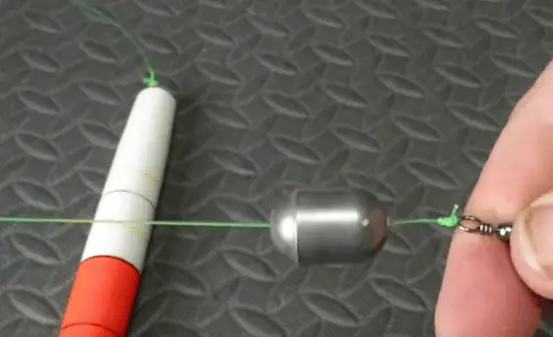In this guide, we will walk you through the simple steps on how to put on bobber stopper , ensuring that your fishing equipment is properly set up for an enjoyable and successful day on the water.
This unassuming little piece of fishing tackle plays a important role in setting up your rig for perfect depth control. Whether you’re a good angler or just starting out, mastering the art of using a bobber stopper can significantly improve your fishing experience. This guide dives deep into everything you need to know about putting on a bobber stopper, from choosing the right type to achieving precise bait presentation.
Why Use a Bobber Stopper?
Bobber stoppers offer several advantages for anglers:
- Precise Depth Control: The primary function of a bobber stopper is to limit how far a slip bobber (a moveable float) travels down your fishing line. This allows you to present your bait at a specific depth in the water column, targeting fish that are actively feeding at that level.
- Snag Reduction: By keeping the bobber from sliding all the way down the line, stoppers prevent it from getting snagged on weeds, rocks, or other underwater obstacles. This is especially beneficial when fishing in areas with heavy cover.
- Versatility: Bobber stoppers can be used with various fishing techniques, including bottom fishing, mid-water presentations, and even trolling.
- Improved Casting: A properly positioned bobber stopper can help prevent the bobber from tangling with your line during casting, leading to smoother and more efficient casts.
Types of Bobber Stoppers
There are two main types of bobber stoppers readily available:
- Rubber Bobber Stoppers: These are the most popular type, made from a soft, durable rubber material. They come in various sizes to fit different line thicknesses and feature a loop at one end for attaching to the line and a small slit or channel for the line to slide through.
- Bead Bobber Stoppers: These consist of a small bead with a wire loop running through it. They are simple and lightweight but might not be as secure as rubber stoppers, especially for heavier lines.
When choosing a bobber stopper, consider the following factors:
- Line Weight: Match the stopper size to your fishing line‘s diameter. A stopper that’s too small might slip easily, while one that’s too large might be difficult to slide on the line.
- Durability: Opt for high-quality rubber stoppers that can withstand wear and tear.
- Personal Preference: Some anglers prefer the simplicity of bead stoppers, while others favor the secure hold of rubber stoppers.
How to Put on Bobber Stopper : Step-by-Step Guide
Now, let’s get down to the practical side of things! Here’s how to put on a bobber stopper :
Materials:
- Fishing line (monofilament, fluorocarbon, or braided)
- Bobber stopper (rubber or bead)
- Scissors (optional)
Steps:
Prepare your line: Thread your fishing line through the swivel or eyelet at the top of your bobber. Leave enough slack for the bobber to slide freely.
Position the bobber stopper: Locate the desired depth where you want your bait to be positioned in the water column. Slide the bobber stopper up the line until it reaches that point.
Attach the bobber stopper (Rubber):
- For rubber stoppers, locate the loop at one end.
- If the loop is too tight for easy threading, use scissors to carefully snip a small notch on the side (avoid cutting all the way through).
- Thread the line through the loop.
- Pinch the rubber stopper with your thumb and forefinger and carefully slide it down the line until it reaches the desired position.
Attach the bobber stopper (Bead):
- For bead stoppers, simply slide the bead with the wire loop up the line until it reaches the desired position.
Adjust and Secure: Once the bobber stopper is in place, gently pull the line to ensure it’s secure. You can also add a small bead above the stopper for additional security.
Pro Tip: If you’re using a rubber stopper and find it too loose on your line, you can create a tighter fit by wetting the stopper slightly before sliding it on.
Additional Tips for Bobber Stopper Use
- Multiple Stoppers: For even more precise depth control, you can use two bobber stoppers spaced a few inches apart. This creates a “window” within which the bobber can travel, ensuring your bait stays within a specific depth range.
- Line Condition: Worn or frayed lines might not hold bobber stoppers securely. Regularly check your line for any signs of damage and replace it when necessary.

